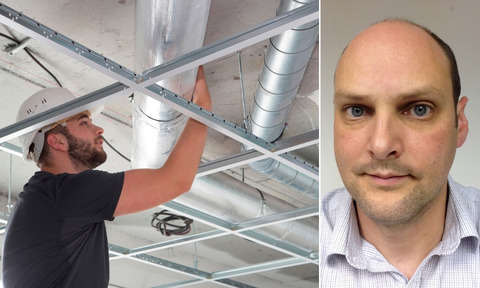Workplace noise is a health issue but how do you locate the source?
25 Mar 2019

Workplace noise may be a well-documented occupational hazard that can have detrimental effects on workers' health, but, explains Anthony Barnett of Armacell, the source of the problem may be less obvious
In a study carried out by Lercher et al1, noise annoyance was found to have a negative impact on an individual's well-being and comfort.
Effects include physiological responses, central nervous system reactions and biochemical changes as well as affecting communication amongst workers. In such situations it exacerbates stress and increases the risk of accidents.
The most obvious source of noise is from the industrial process itself and much work has been done over the years on attenuation and dampening; it is noise from sources that would have been masked by these mechanical processes that has become the problem.
One previously overlooked is that from airborne and structural noise emanating from rainwater systems and drainage pipes running through ceiling elements. These sound waves can reach elevated levels, blocking out devices that are there to protect worker safety, for example, machine alarms, fork truck reversing signals and human voices.
The draft standard created by the BRE (Building Research Establishment) – BS EN ISO 140-18:2006 –outlines the level of noise generated from a roof under certain conditions. It uses two types of rainfall: intense and heavy.
A rainfall rate of 40mm per hour (mm/h) is classed as ‘intense’ and occurs once every 50 years. ‘Heavy’ rain has a rainfall rate of 15mm/hour and occurs once every two years. Often the most intense rain will fall for only a few minutes before easing off to heavy or gentle rain. Noise from rain water on the roof, guttering and downpipes regularly exceeds 70dB - similar to typical street traffic.
Foiling the culprit
The insulation industry has responded by developing flexible technical insulation materials that are designed specifically for attenuating noise from rainwater systems and drainage. Ideally, the material should consist of a 2mm thick foil faced acoustic EPDM-EVA barrier with 4kg/m2 weight and a 9mm elastomeric foam layer for decoupling.
Independent tests by CSTB (Centre Scientifique et Technique du Bâtiment) confirmed that these acoustic foams are able to reduce the airborne sound pressure levels of a roof drainage system by 16 dB (A) at 2 l/s water flow.
Similar tests on a PVC pipe, where the vibrations caused by flowing water are stronger because of the lighter weight PVC, achieved a noise reduction of 12 dB (A). The human ear perceives a reduction of 10 dB (A) as halving the volume. By choosing the correct flexible acoustic foam it is possible to achieve a weighted sound reduction index (Rw) up to 28 dB when pipe and pipe elbows are insulated.
As sound mitigation in industrial processes becomes ever more effective, noise disturbance from rain will grow
Acoustic foam materials have very good acoustic damping and acoustic isolation properties across the frequency range relevant for building acoustics in industrial buildings – irrespective of whether it is installed on aluminium or PVC rainwater and waste water pipes. They also display very good fire behaviour, achieving the best fire class for organic products in the European SBI test.
As sound mitigation in industrial processes becomes ever more effective, noise disturbance from rain will grow relative to this. Any materials that tackle this issue will be making an important contribution to occupational health and welfare.
It is therefore essential that noise abatement measures in the form of thin acoustic lagging are consistently planned and properly carried out, both when constructing new buildings and when modernising existing ones.
Anthony Barnett is technical marketing manager at Armacell

